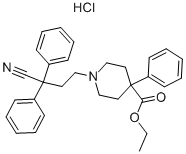SAFETY INFORMATION
| Signal word | Danger |
|---|---|
| Pictogram(s) |
 Skull and Crossbones Acute Toxicity GHS06  Health Hazard GHS08 |
| GHS Hazard Statements |
H301:Acute toxicity,oral H317:Sensitisation, Skin H334:Sensitisation, respiratory |
| Precautionary Statement Codes |
P262:Do not get in eyes, on skin, or on clothing. P280:Wear protective gloves/protective clothing/eye protection/face protection. |
COMPUTED DESCRIPTORS
| Molecular Weight | 489.0 g/mol |
|---|---|
| Hydrogen Bond Donor Count | 1 |
| Hydrogen Bond Acceptor Count | 4 |
| Rotatable Bond Count | 9 |
| Exact Mass | 488.2230560 g/mol |
| Monoisotopic Mass | 488.2230560 g/mol |
| Topological Polar Surface Area | 53.3 Ų |
| Heavy Atom Count | 35 |
| Formal Charge | 0 |
| Complexity | 666 |
| Isotope Atom Count | 0 |
| Defined Atom Stereocenter Count | 0 |
| Undefined Atom Stereocenter Count | 0 |
| Defined Bond Stereocenter Count | 0 |
| Undefined Bond Stereocenter Count | 0 |
| Covalently-Bonded Unit Count | 2 |
| Compound Is Canonicalized | Yes |
PRODUCT INTRODUCTION
description
Diphenoxylate Hydrochloride is the hydrochloride salt form of diphenoxylate, a piperidine derivate, chemically related to narcotic meperidine, with antidiarrheal activity and devoid of central nervous system (CNS) activity. Diphenoxylate acts on opioid receptors in the gastrointestinal tract, thereby decreasing gastrointestinal motility and causing constipation or preventing diarrhea.

